Alpine slide rock garden is a rocky slide decorated with plants and stones, the object is the main decorative element on the site. It creates the main focus on the territory; certain rules and design standards are taken into account when arranging it. There are a large number of options for photos of rock gardens in landscape design.
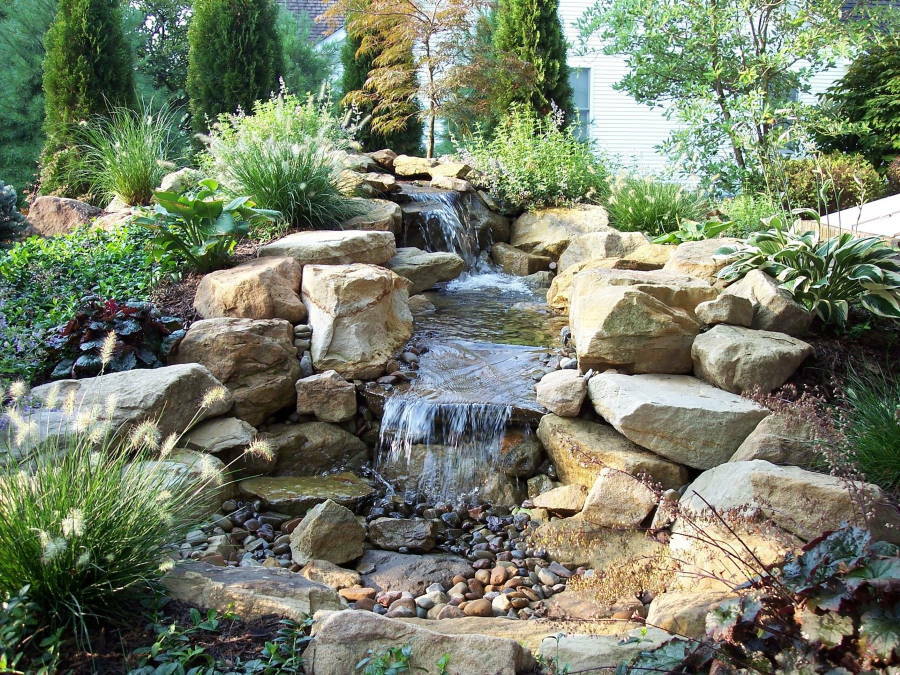
Alpine slide with a waterfall - the dream of many summer residents
An alpine slide is considered an excellent replacement for flower beds and flower beds, this approach provides zoning of even a small space in the garden. Landscaping of this type will also allow disguising embankments not intended for planting. Staying in a country house with a properly designed landscape design turns into a real pleasure.
Types of rock gardens in shape
Content
- Types of rock gardens in shape
- Types of rock gardens by size
- Choosing the right place for a rock garden
- Plants for rock garden
- Rockery and rock garden: what's the difference?
- Video: How to make a rock garden with your own hands
- Photo gallery: 50 ideas for creating a rock garden on your site
- One of the most common forms of rock garden is considered to be "Rock", its name explains the principle of creation. Its arrangement requires a certain amount of experience, minimal architectural knowledge. The alpine slide is made in the form of a steep structure of boulders, which are used to delimit tiers and plants. The size of the boulders changes downward as the level increases. The construction "Czech Rock" has recently been in great demand, its main feature is the presence of cracks on the boulders. For plantations, dwarf conifers, junipers, ferns, and fat women are used.
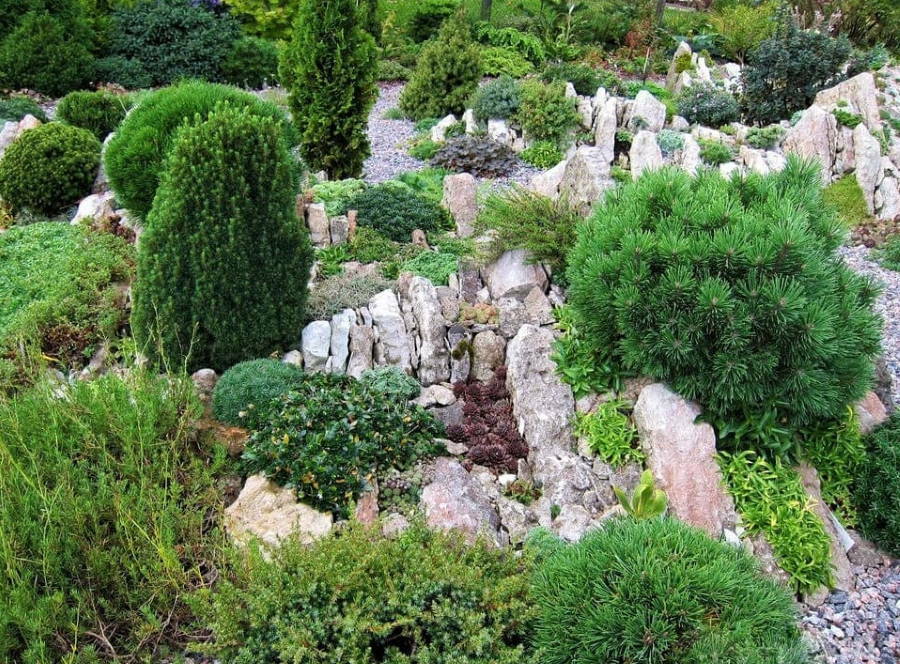
Flat stones of various sizes are used to create the Czech Rock. Plates are installed on the edge parallel to each other
- Form "Mountain slope" - the mountain tilts to one side, when arranging a rock garden, small pebbles are used. The complexity of the design lies in the fact that trees are part of it, and not only have a decorative function. The roots do not allow the embankments to crumble under the influence of their own weight or weather conditions. When arranging shrubs, dwarf trees, creeping vegetation are used.
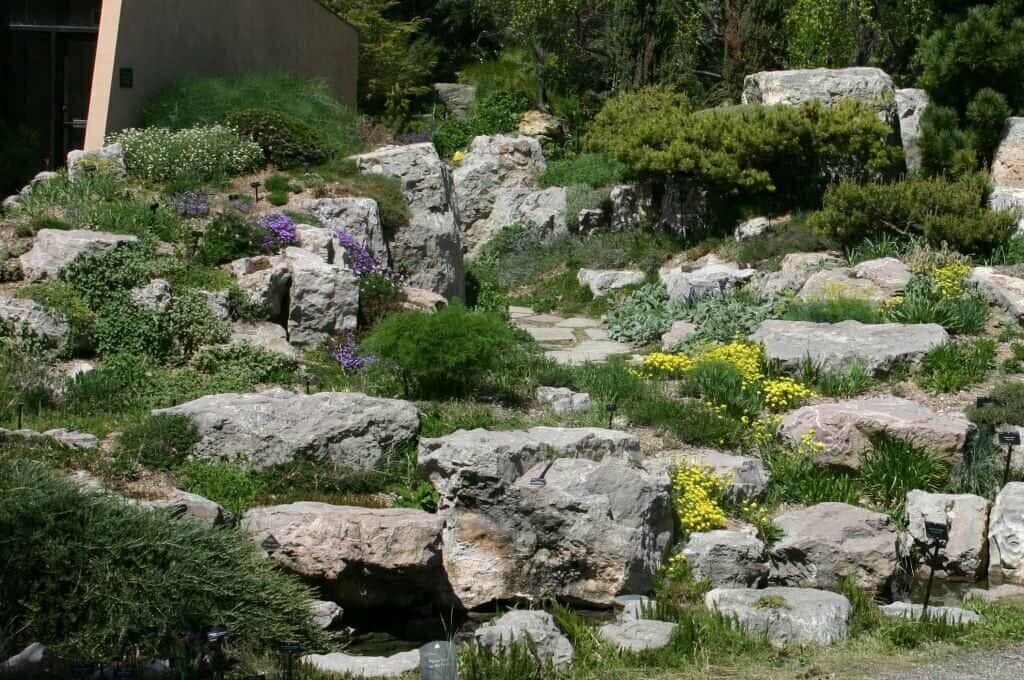
The easiest way to recreate a mountain slope is at a natural elevation.
- Rock garden scheme "Rocky Wall" - this form is widely used in the arrangement of raised flower beds, they are also found in areas with terraced slopes. Low-growing plants, dwarf pines are used for decoration. The main advantage of the rock garden is that there is no need for special care, it is enough to periodically add mineral compositions. The south is considered an ideal place for an alpine slide; plants do not bloom in the shade.
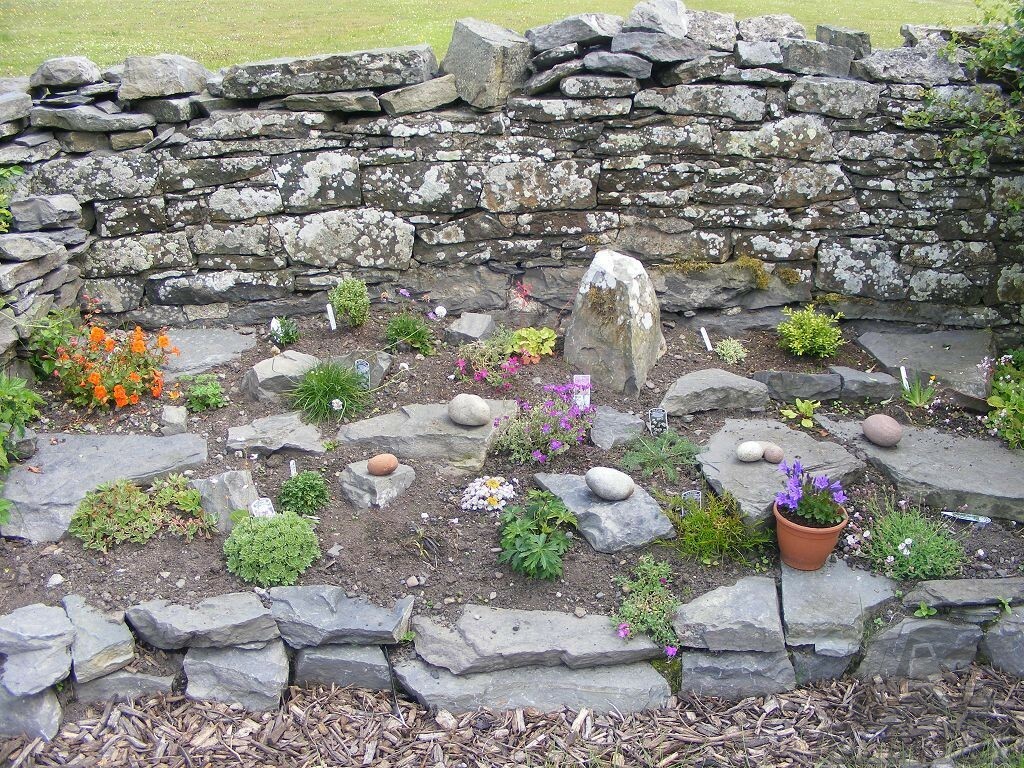
The stone wall is usually laid out from flat slabs or cubic rubble
- Form "Terrace" - most often the design of a gentle slope with a clear delineation of levels is assumed. Large boulders are located along the steps. Popular forms also include gorges, ravines, mountain stream, swamp, photos of rock gardens can be found on the Internet.
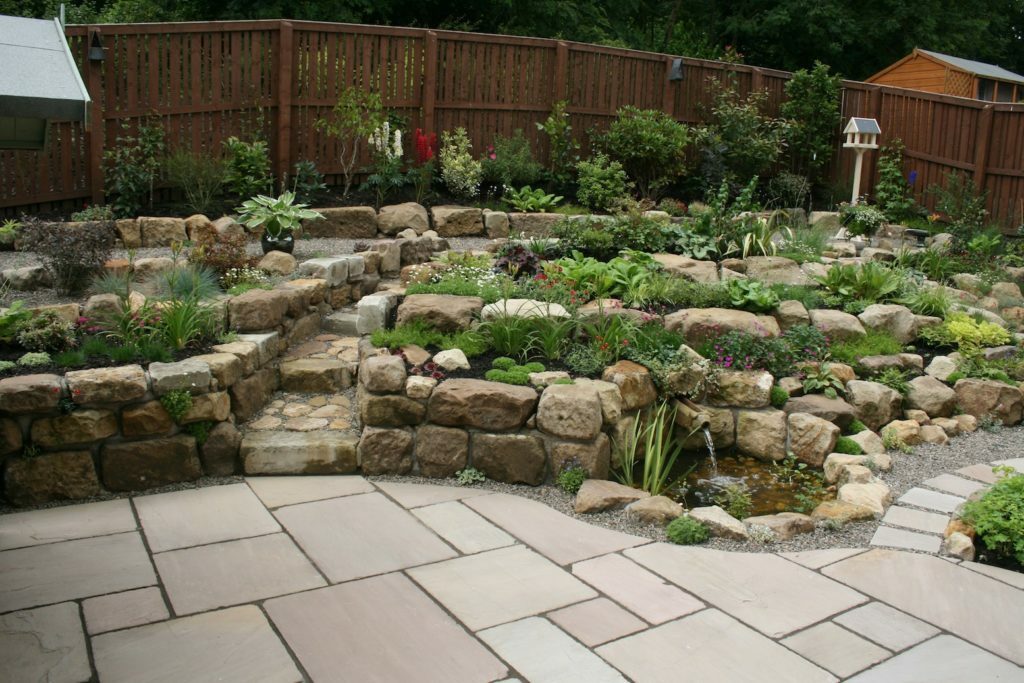
The terraced slope can be completed with steps or a mountain path
Types of rock gardens by size
In terms of size, large, small alpine slides, mini-rock gardens are distinguished. When planning a design, the area of the site plays an important role, as well as its compatibility with other objects.
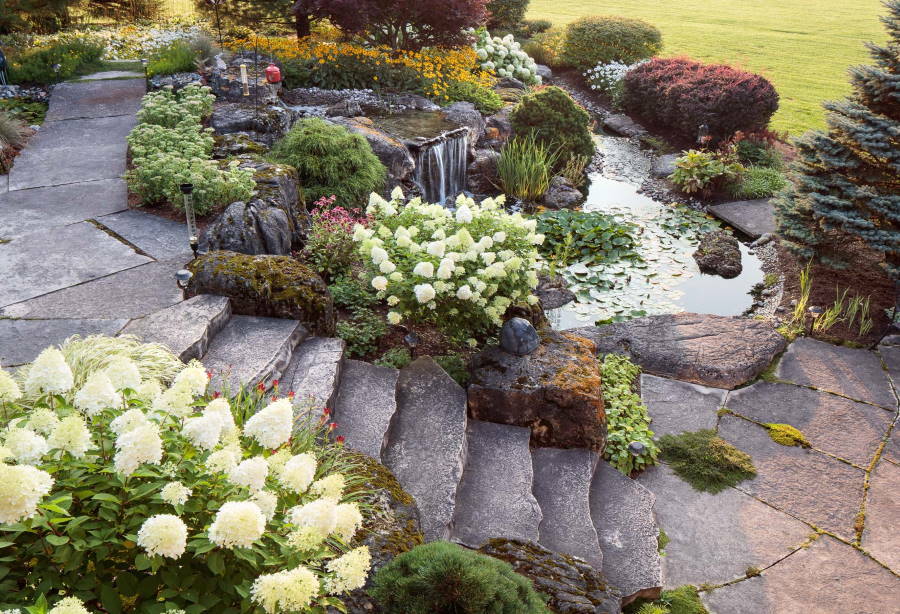
Every gardener can create a piece of real Alps on his site
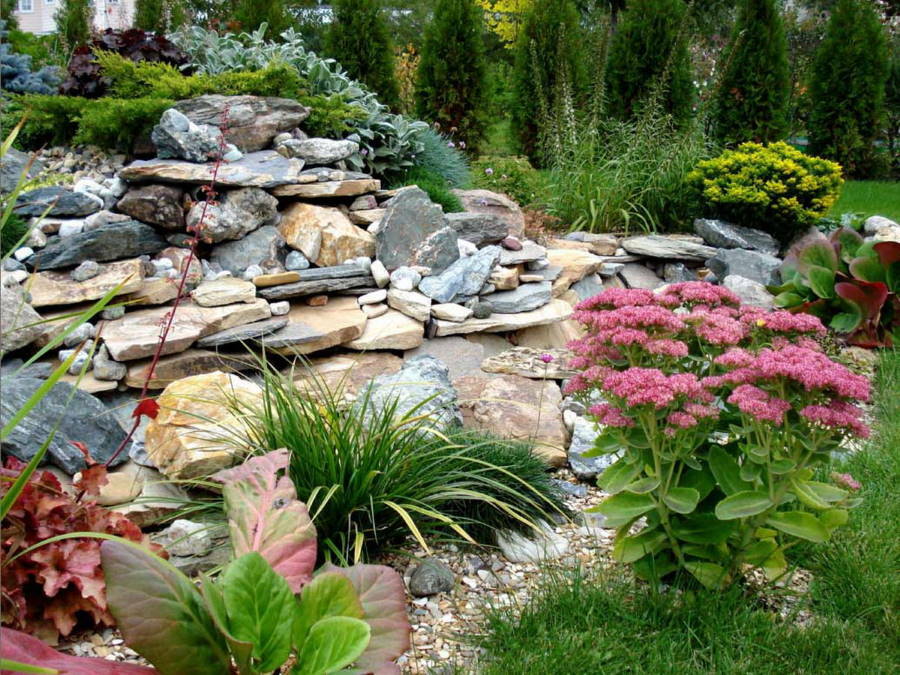
You just need to study the theory and be patient.
Large rock gardens fit well into large areas, look great against the background of spreading trees nearby with large-scale buildings. When arranging them, large stones are used.
- Small alpine slides are combined in turn with small houses, buildings, trees.
- A large rock garden differs from a small one only in size.
You can create a small alpine slide with your own hands in just a couple of hours; for this, improvised materials, crushed stone or small stones are suitable. The slide can be open and one-sided, in the latter case, it is placed against the wall of the house, the fence.
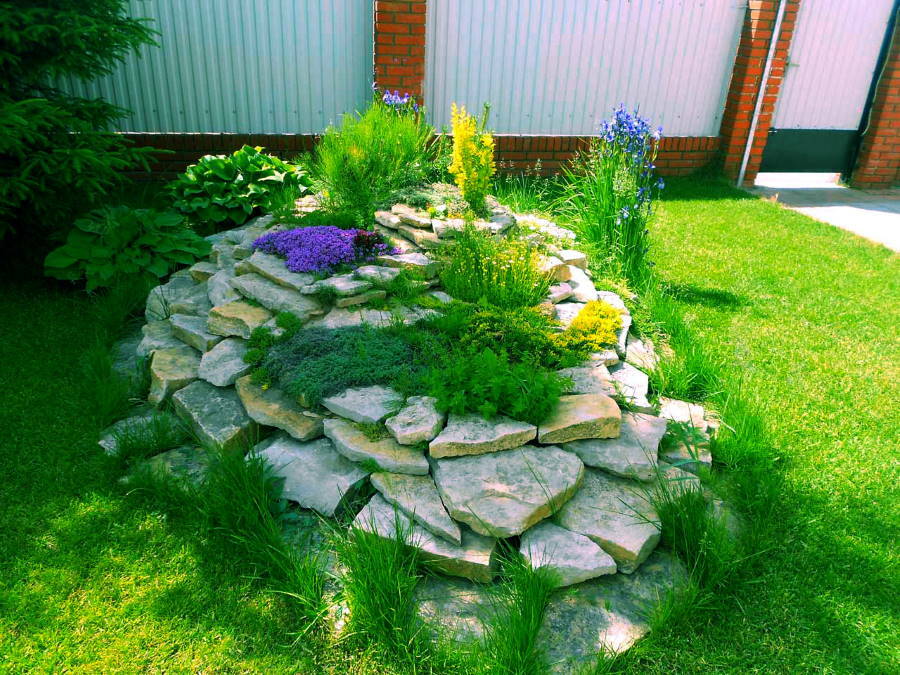
A small rock garden made of rubble stone collected on our own site
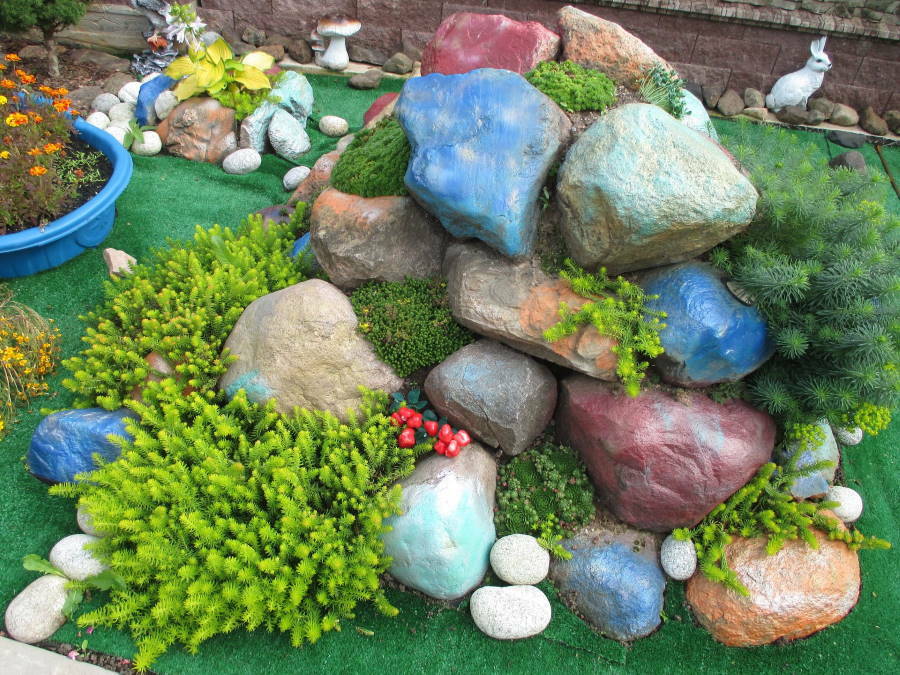
Compact alpine slide made of beautiful stones of different colors
A mini-rock garden is considered the easiest way to equip an alpine slide. It is ideal for placement in a small area, as well as in the absence of time to care for a large rock garden. The slide is placed in a container, dish, any other available containers are widely used.
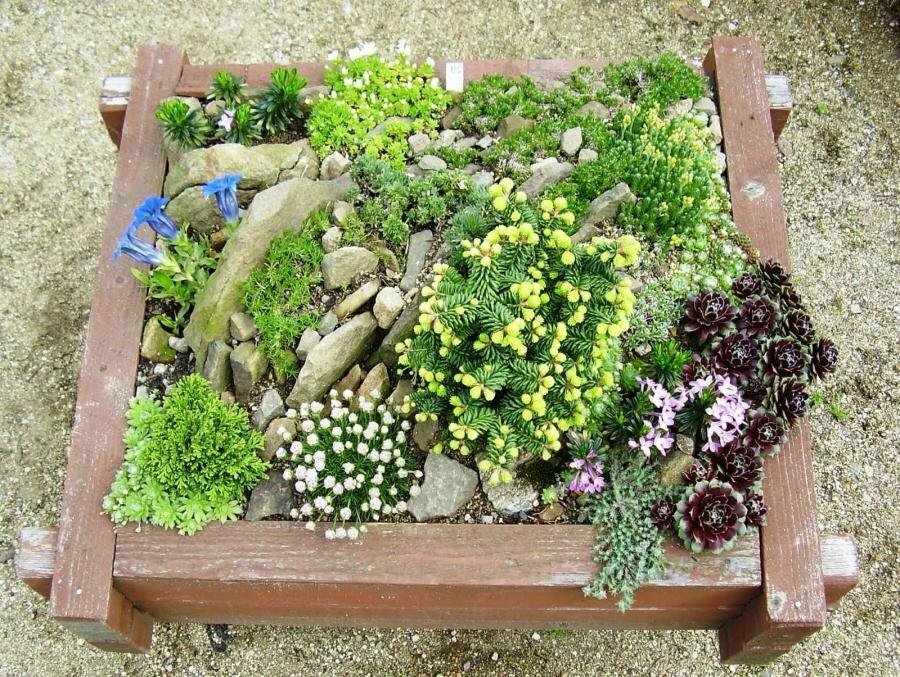
The container rock garden can be placed both in the garden and in a city apartment
The rock garden can be installed near the porch or barbecue, along the road, on the loggia. It is easy to carry it to different places, the best place for installation is considered to be east or west.
Choosing the right place for a rock garden
The main criterion when choosing a place for a classic alpine slide is a site that is well visible from all sides. Preference is always given to planting light-loving plants, so the site should be as illuminated as possible by the sun.
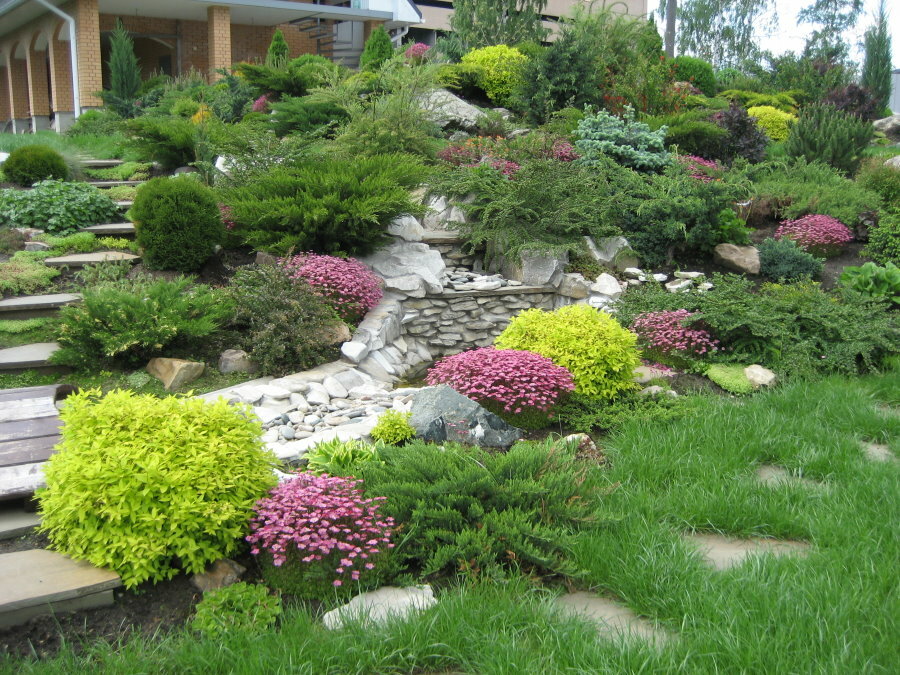
For a richer and more intense flowering, the slope of the hill must be oriented to the south.
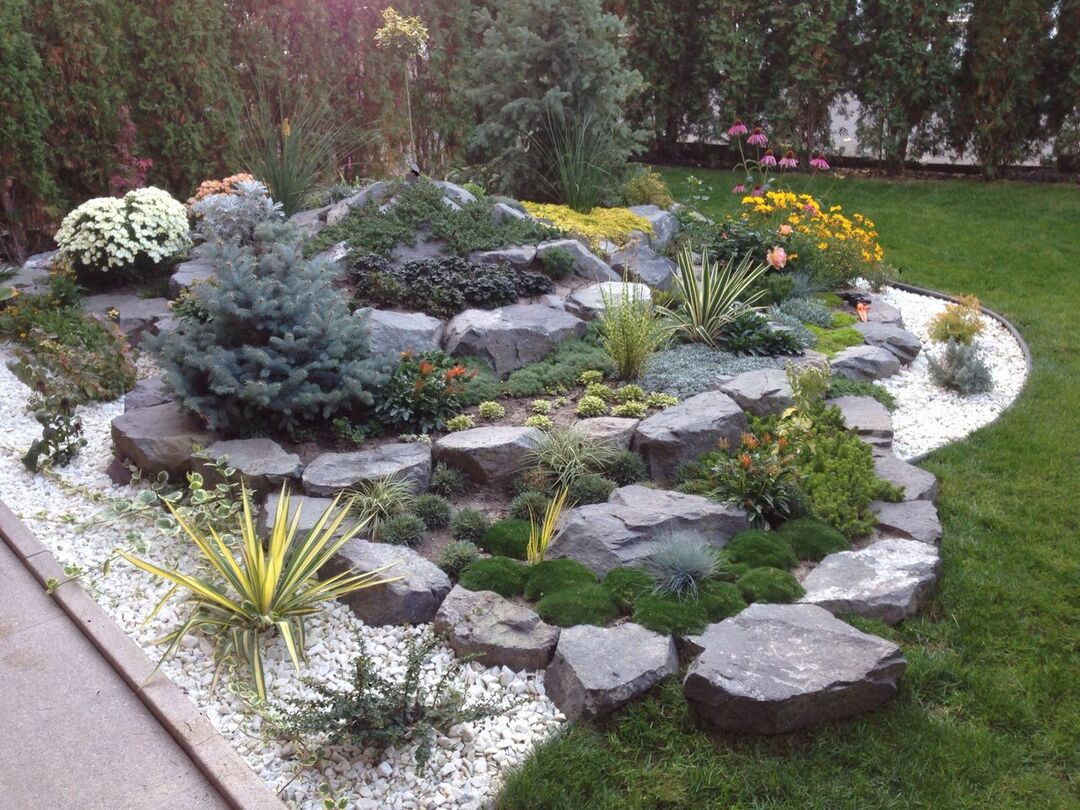
To create a rock garden, you need a large enough area so that the slide does not look bulky
Shaded areas of territories near buildings are not suitable for these purposes. There should be no “unnatural” objects (lights, automated irrigation systems) nearby to avoid dissonance. An alpine slide can be located near fences, from the edge of the lawn. This option allows you to create a contrast between a long object and a bright rock garden.
Plants for rock garden
When arranging rock gardens, alpine mountain plants are used, colors do not matter. The choice of plants depends on individual preferences. The main requirement is a harmonious combination in the landscape.
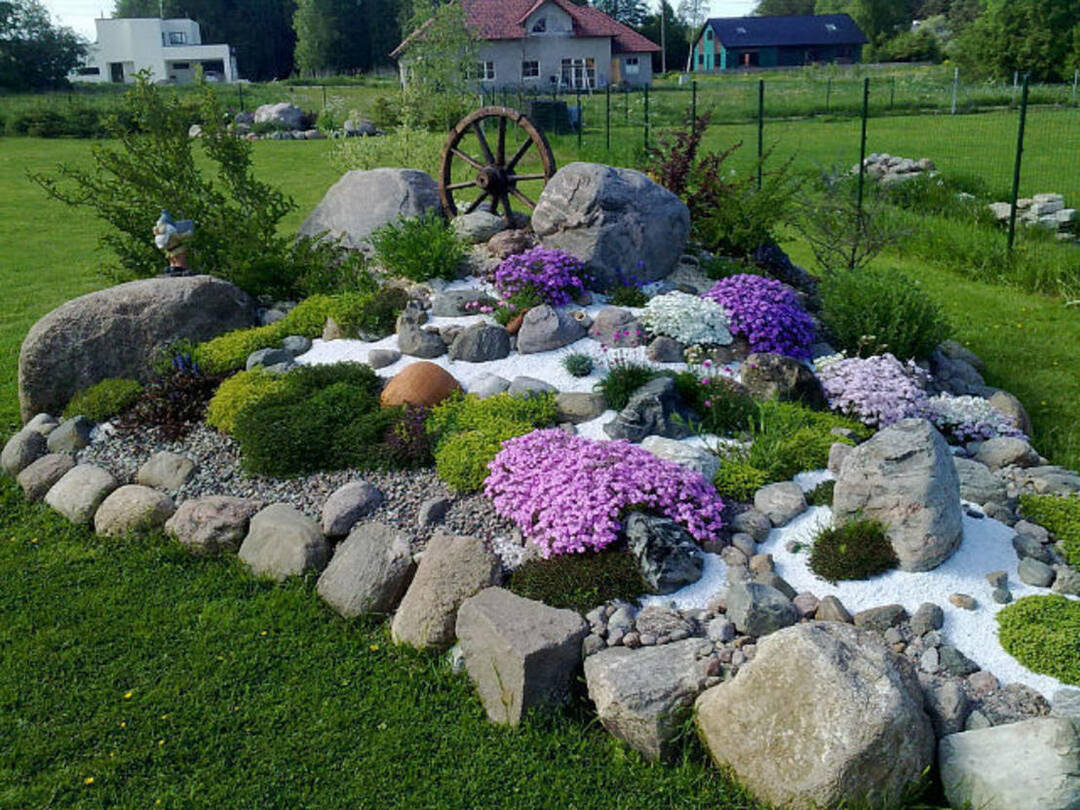
For the rock garden, for the most part, undersized plants are selected.
When planting crops, the growth rate of neighboring plants should be taken into account. Ground cover perennials, heather crops, conifers, ferns, small trees, perennials are in great demand when arranging rock gardens. Drought-resistant grasses should be planted on the upper tier. Shrubs, lush species must be planted at the foot.
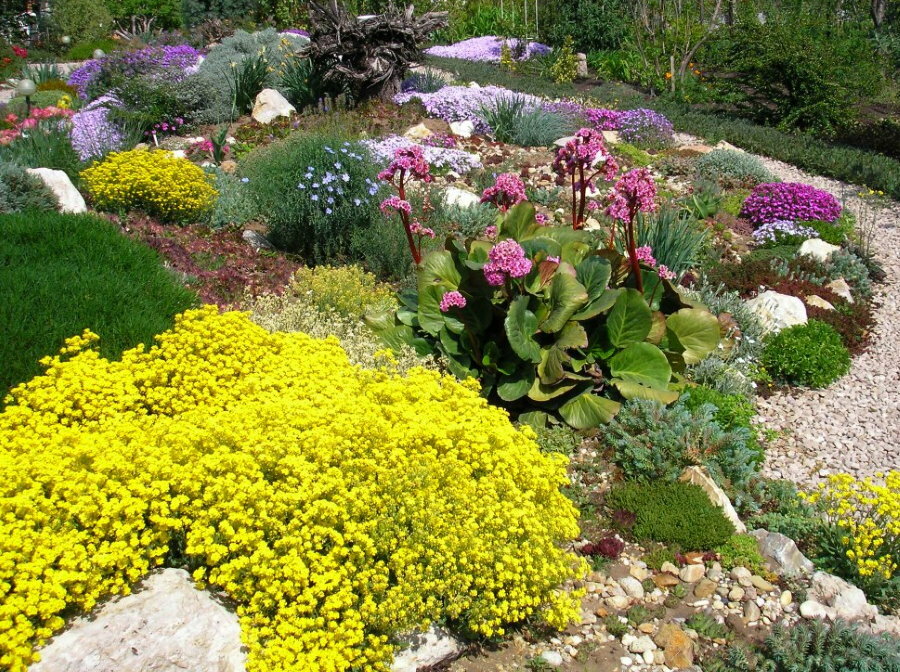
The undersized alyssum is perfect as a background. A blooming rug from this plant covers the hill for quite a long time.
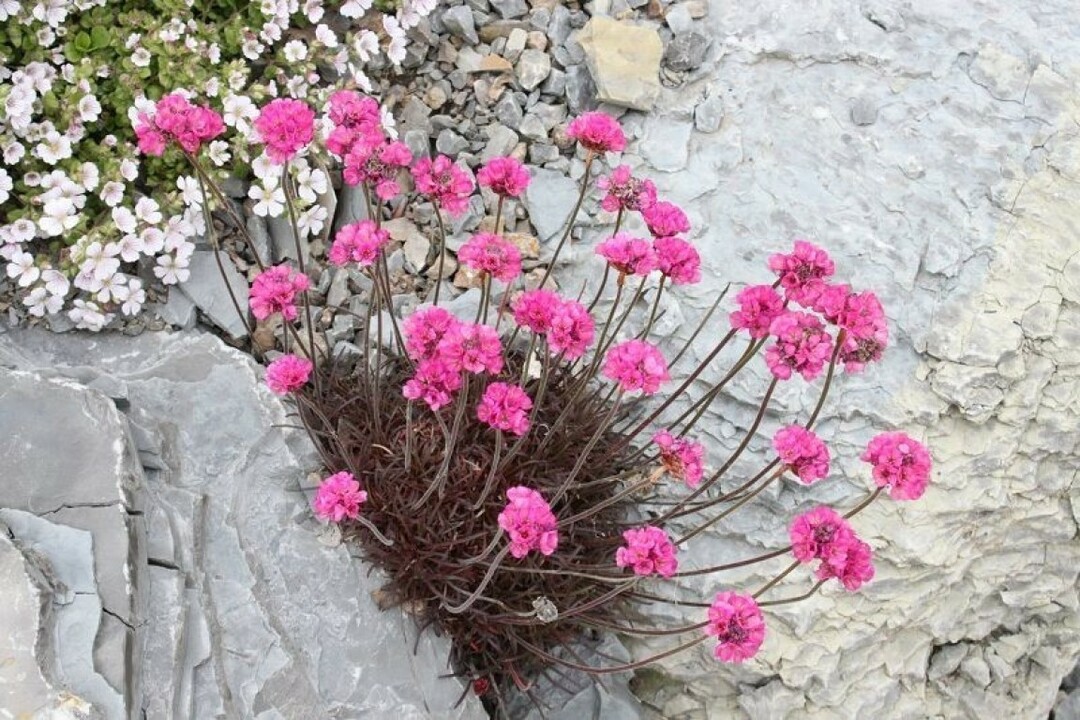
Armeria easily takes root on rocky soils - a low perennial plant that can bloom from May to September
All plants should be undersized, large species should not be planted, as they will deprive the undersized of the sun, shade them, and disrupt the overall picture. Cover species are located on the lower tier. They evenly fill the lower level, which is covered with small leaves during the flowering period. This category includes saxifrage, rezuha (arabis), young, stonecrop.
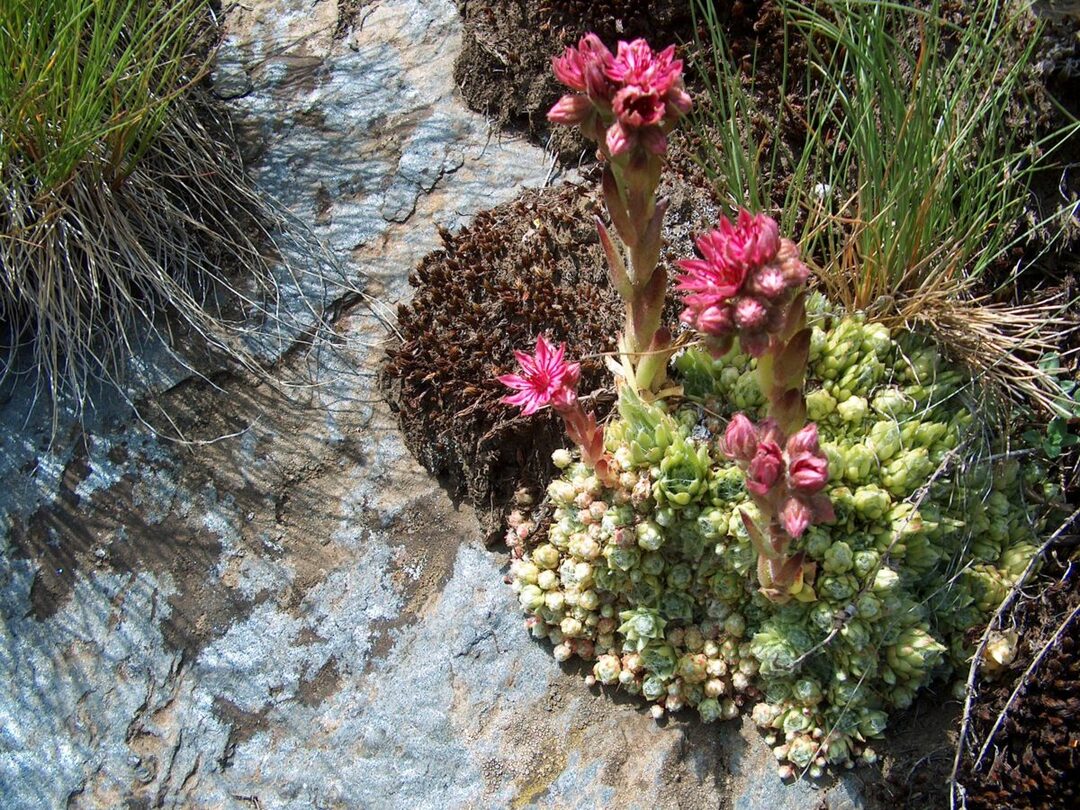
The “Stone Rose” is ideal for decorating a rocky landscape (it was rejuvenated). The many varieties of this plant allow you to create interesting compositions.
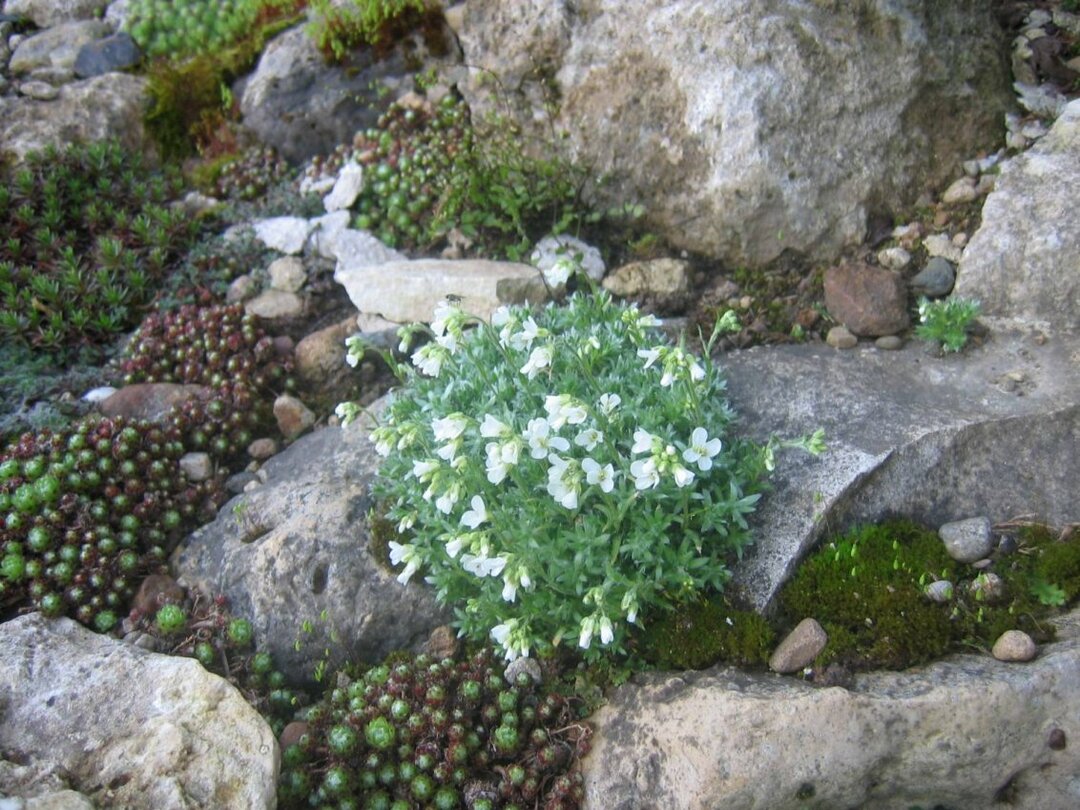
Arabis is one of the best natural style rock garden plants. It is enough to plant one bush, which grows very quickly in loose soil
At first glance, creeping and creeping plants for rock gardens are no different from ground cover plants, both of these species are intended for planting on the lower tier. The main difference is in the root system. Where cover plants will not grow, creeping plants will cover much more area than ground cover plants. The second difference between creeping flowers is their ability to braid large boulders and other landscape objects. Due to this feature, it is possible to make a truly unique design. When arranging rock gardens, eustoma, cinquefoil, euonymus, aster, junipers (horizontal, Blue Forest) are often used.
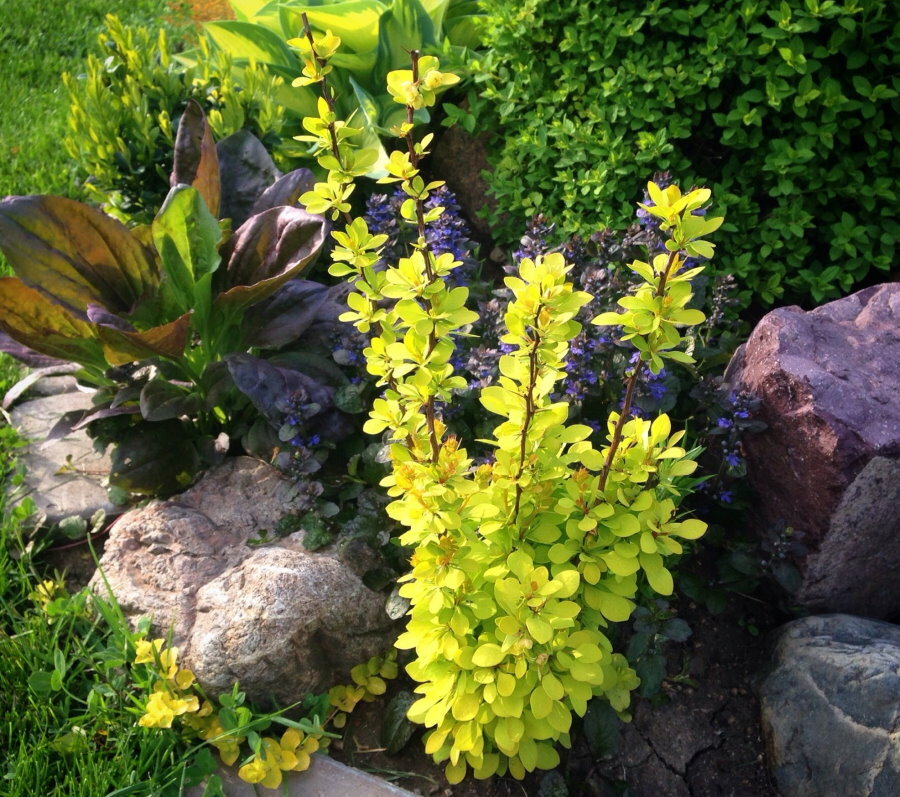
Among the gray stones, the euonymus with soft green foliage looks great
Conifers are ideal for rocky soils, mountainous landscapes, they are great attention-grabbing, their color does not matter. Evergreen shrubs or trees, ornamental perennials are often used as alternatives.
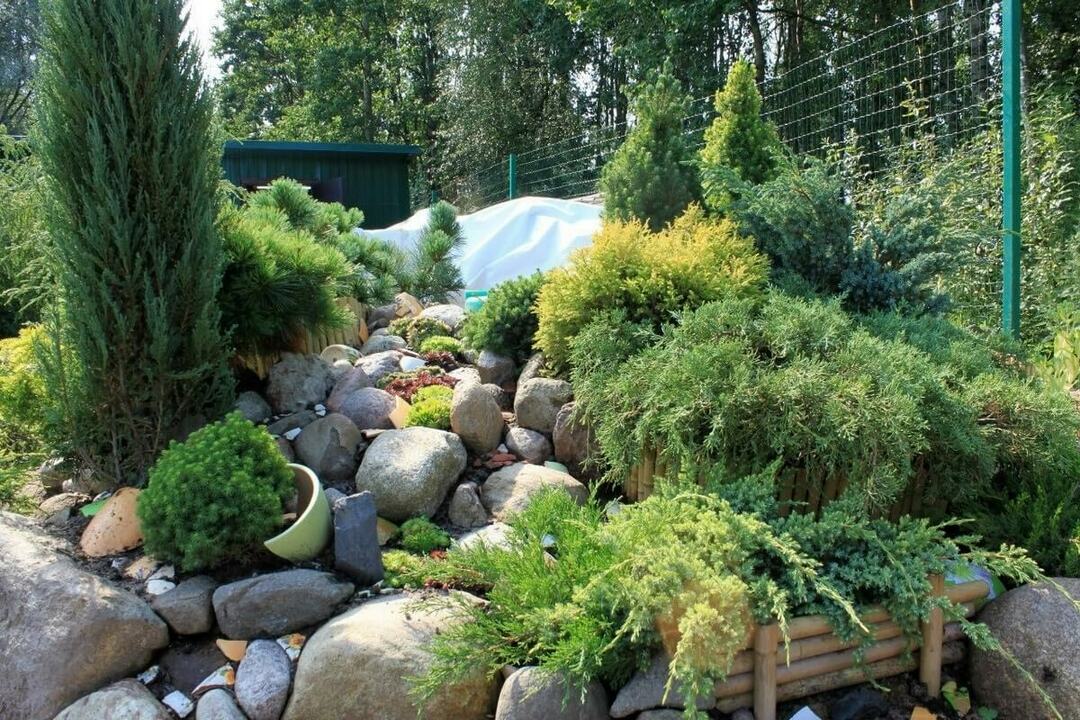
Evergreens should not obscure the composition of the rock garden itself, so they try to plant them around the edges.
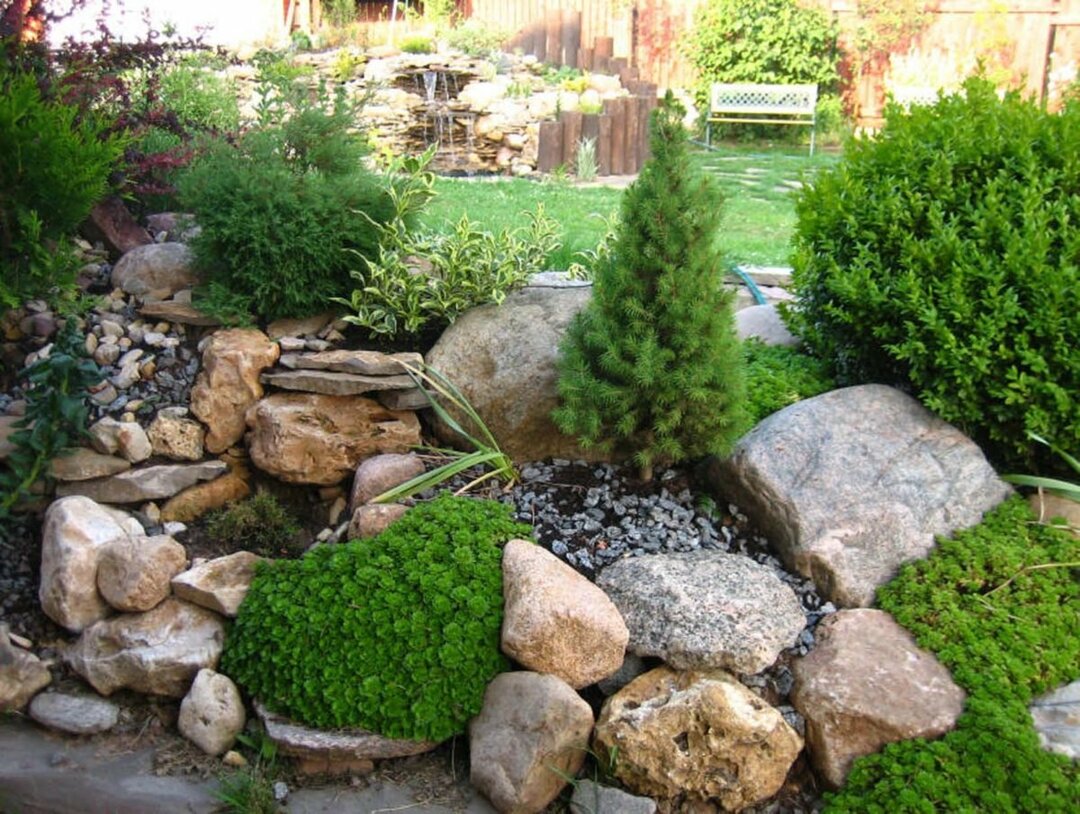
Dwarf pines and spruces, junipers and spherical thuja are best suited for a rock garden.
Tall flowers are also used in the arrangement of rock gardens. When choosing, one should give preference to crops that can grow in the sun and not in the most fertile soil. They should be long enough and pretty. Most often, it is these flowers that require special care. Due to the lack of soil, plants often need replanting and feeding. The tall category includes wild rose, roses, peonies, lilies.
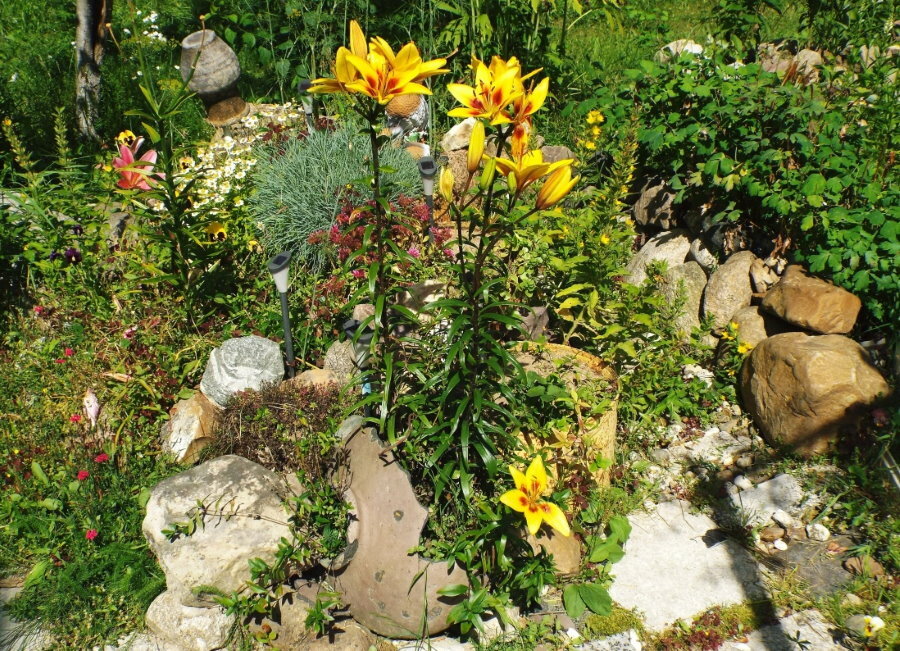
Small rock garden with beautifully blooming lilies
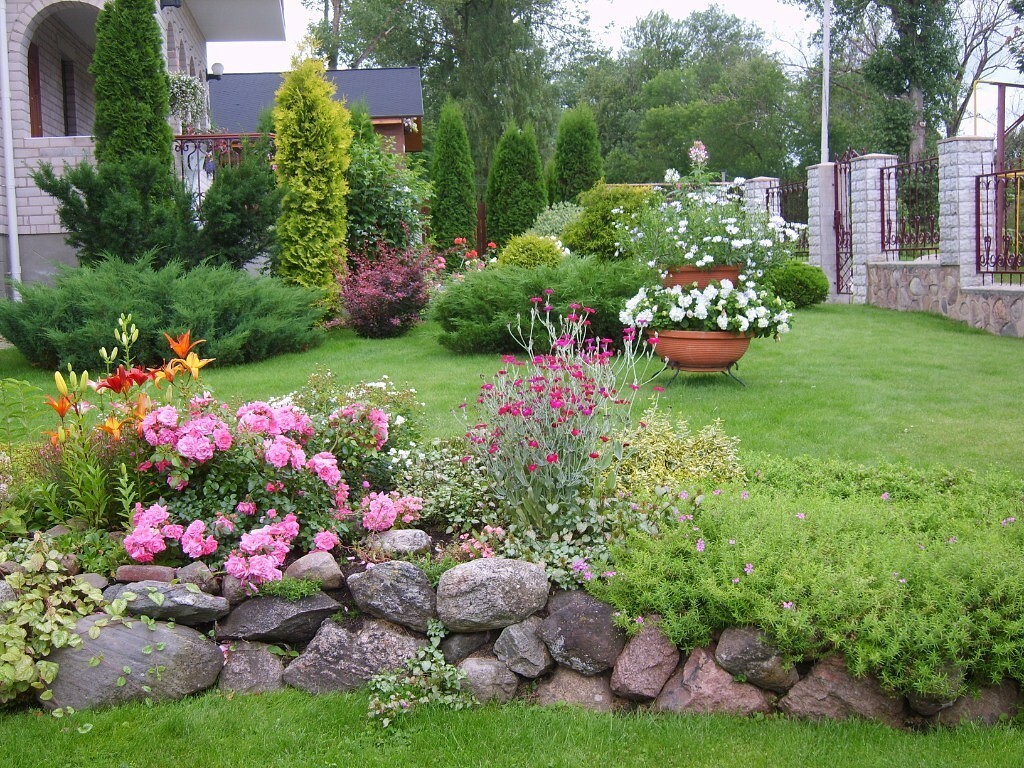
Compact alpine slide with roses and carnations
Low- and medium-sized plants are used to create the transitions between levels. They are used to fill the main space of the rock garden. Such crops serve as curbs and are used to create accents. This species includes fescue, lavender, primrose, woodland, carnation, lumbago, poultry, bulbous plants.
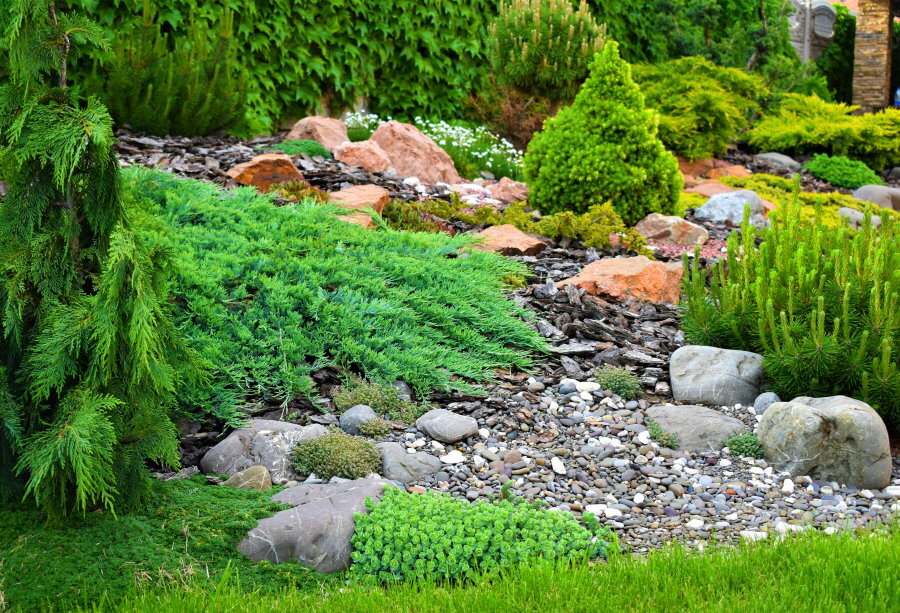
When filling a rock garden with green spaces, it is important to maintain a balance between stones and plants.
Rockery and rock garden: what's the difference?
Many do not understand what a rock garden is, how it differs from a rock garden. When arranging rockeries, one should be guided not by dim muted tones, an alpine slide provides for the creation of an eye-catching picture that attracts the eye even without bright vegetation.
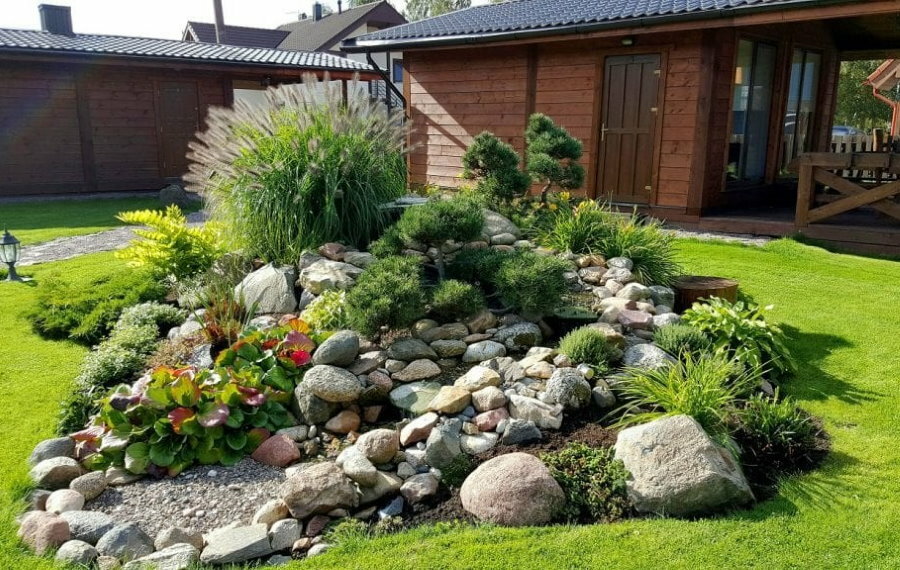
A rock garden is an imitation of a mountainous area, created by artificial means.
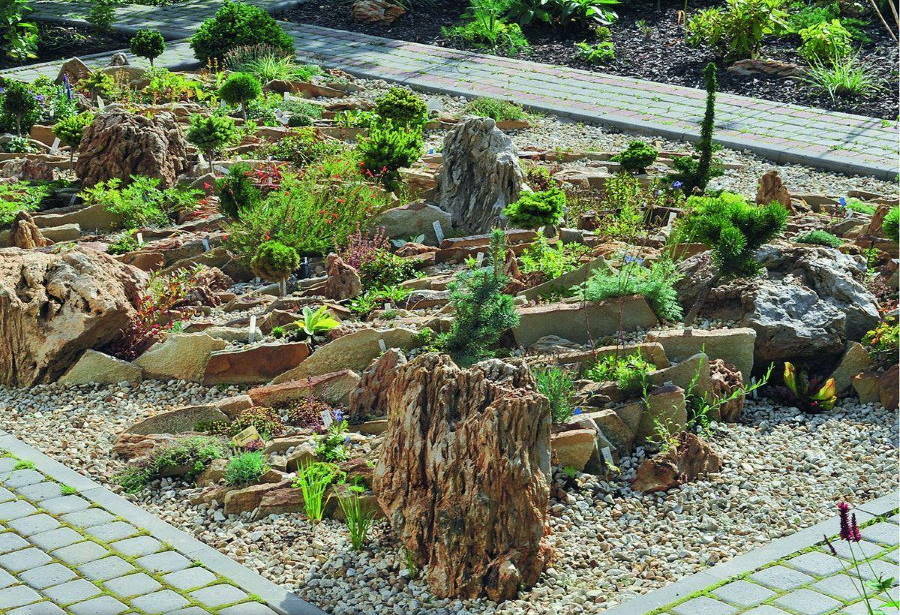
Rockery - in fact, this is the same alpine slide, only flat
The main differences are:
- The rock garden consists of real alpine plants, the planting of which is not at all necessary to create a rockery.
- The alpine slide should be located on a hill, the surface for rockeries is always moderately flat, the abundance of flowers in this case can give the impression of bad taste.
- In the rockery, stones prevail, in the rock garden - plants.
- The rock garden requires more care, due to the presence of a large number of plants.
When arranging rockeries, the main attention is paid to the selection of stones; when planting crops, preference is given to weakly growing plants. When creating a rock garden or rockery, it is recommended to take into account your own preferences; all the options can be found in the photo gallery.



